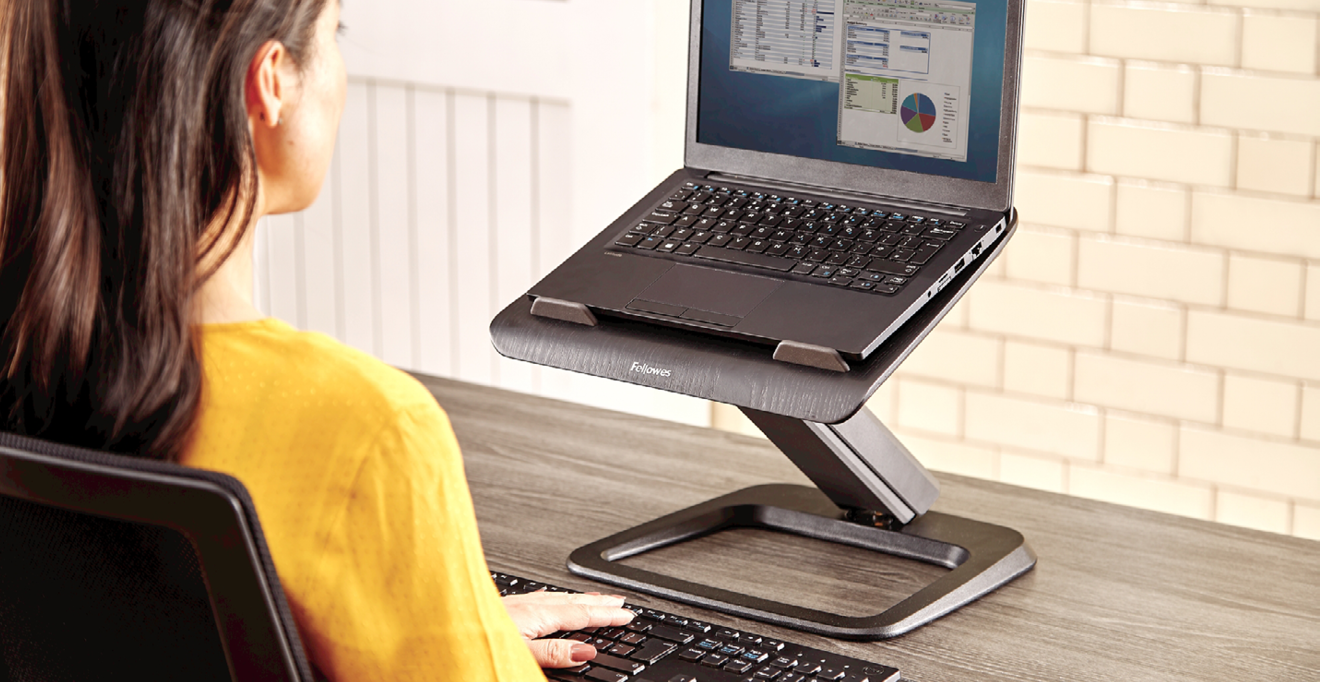Physical Address
304 North Cardinal St.
Dorchester Center, MA 02124
Physical Address
304 North Cardinal St.
Dorchester Center, MA 02124

Discover essential steps to perfect laptop ergonomics, ensuring a comfortable and productive workspace for every professional. Learn how to create an ergonomic laptop setup with these expert tips.

In the modern, fast-paced corporate world, the workspace has evolved significantly, placing new demands on our bodies. One of the key aspects of this evolution is the rise of ergonomics, the science of designing the workspace to fit the worker. As more professionals spend significant portions of their day on laptops, understanding the nuances of an ergonomic setup is crucial.
Ergonomics is the study of efficiency in working environments. It’s about ensuring that a workspace complements the physiological and psychological needs of the individual. For young professionals living in bustling cities, the impact of ergonomics can’t be understated. Prolonged hours spent at the desk without an ergonomic setup can increase strain on the body, potentially leading to discomfort or long-term health concerns. By catering to a worker’s needs, ergonomics promotes health and boosts morale, focus, and overall efficiency. It’s not just about working hard but working smart, ensuring you’re set up for success at your workstation.

Laptops offer unparalleled flexibility, but they also introduce several ergonomic challenges. One prevalent mistake is placing the laptop on a low surface, forcing the user to hunch over, straining the neck and shoulders. Screen distance is another issue, with laptops often positioned too close or too far away, which can strain the eyes. Keyboard positioning is another concern, as built-in keyboards may promote wrist angling that isn’t ideal, potentially leading to discomfort over time.
Here’s a step-by-step guide to turning your workspace into an ergonomic haven:
Having an ergonomic setup is just the start. Maintaining an ergonomic posture and habits is where the true benefits come into play. Simple practices can ensure that you don’t slip back into old habits. Stay active, take regular breaks, and stay hydrated. Consistency in your ergonomic habits is as essential as the initial setup itself.
Beyond the essentials of a laptop stand and an ergonomic desk, a world of accessories can further refine your workstation experience. Consider ergonomic keyboards and mice designed to provide a more natural hand and wrist position. An anti-fatigue mat can be a game-changer if you’re using a sit-stand desk. They alleviate the strain on your legs and feet during longer standing periods. Another overlooked accessory is proper lighting. Task lighting that’s adjustable can ensure that you’re not straining your eyes in a dim environment.
Embracing ergonomics is not merely about integrating the right tools; it’s a commitment to better work practices and overall well-being. With the steps outlined in this article, you’re well on your way to creating a workspace that boosts productivity and takes care of your health. It’s always beneficial to keep abreast of new ergonomic trends and innovations. After all, your work environment should evolve just as you do. As you continue in your professional journey, let the principles of ergonomics guide you, ensuring every workday is as comfortable and efficient as possible.
Ergonomics is the science of designing the workspace to fit the worker, ensuring that a workspace complements the physiological and psychological needs of the individual. It’s crucial because it promotes health, boosts morale, focus, and overall efficiency, especially for those who spend prolonged hours at a desk.
Common ergonomic mistakes include placing the laptop on a low surface, causing strain on the neck and shoulders, incorrect screen distance which can strain the eyes, and improper keyboard positioning that may lead to discomfort over time.
Setting up your laptop for optimal ergonomics involves having an ergonomic desk, positioning your laptop so the top of the screen is at or slightly below eye level, ensuring the screen is an arm’s length away, using an external keyboard and mouse, maintaining good posture, taking care of your eyes, and using additional accessories like a footrest, wrist rests, or a document holder.
Maintaining ergonomic consistency involves staying active, taking regular breaks, staying hydrated, and making regular adjustments to your workspace based on any discomfort or new requirements.
Ergonomic accessories that can enhance your workspace include ergonomic keyboards and mice, an anti-fatigue mat for sit-stand desks, and adjustable task lighting to prevent eye strain.